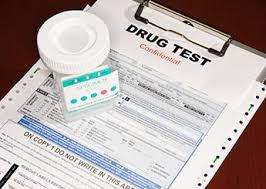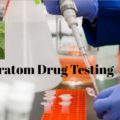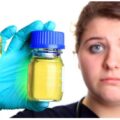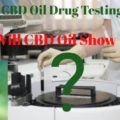Alcohol is a depressant drug that can slow down the messages to and from the brain and body. Alcohol can affect your problem solving skills, judgment, concentration, reaction times and coordination. This is why employers employ drug and alcohol testing to determine if employees or job applicants are using drugs or alcohol. It can identify evidence of recent use of alcohol, prescription drugs and illicit drugs. Currently, drug testing does not test for impairment or whether a person’s behavior is, or was, impacted by drugs.
These substances can impair a person’s mental and physical abilities, cause long-term health issues, and create unsafe situations. For these and many other reasons, it is common for employers to establish a drug-free workplace testing program that includes both drug and alcohol testing. Concerns regarding substance abuse vary from company to company, so many of these screening services are quite flexible and allow the employer to create a customized testing program that fits the company’s goals and the industry’s requirements. One common question many employers and employees have regarding workplace alcohol and drug tests is, whether alcohol show up in a drug test.
Does Alcohol Show Up in a Drug Test?
Does alcohol show up in a drug test? Although alcohol does not appear in standard drug tests, it can be included in a drug test if specifically requested. So if you’re interested in testing employees for both drugs and alcohol, simply consult with your screening service to determine what type of program best meets your needs.
How Can an Employer Test for Alcohol in the Workplace?
The Substance Abuse and Mental Health Services Administration (SAMHSA) recommends testing for at least five drugs (amphetamines, THC, cocaine, opiates, and phencyclidine) as well as alcohol. Although a standard drug test does not evaluate the presence of alcohol in a person’s system, many companies do include alcohol in their testing policy, using a breath or saliva test. In addition, with the growing use and misuse of prescription medications, many companies are requesting their drug test include additional drugs beyond the standard five mentioned above (e.g., adding synthetic opiates and ecstasy).
The Department of Transportation (DOT) alcohol testing program, which must be followed by employers with employees in DOT-covered safety-sensitive positions, is unique. The DOT drug program tests for marijuana, cocaine, amphetamines, opiates, and phencyclidine (PCP) only, and the alcohol test is conducted separately in two parts.
First, a screening test is performed in a private area and the employee is shown the results. Then, if the screening test provides a BRAC result of 0.02 or greater, a confirmation breath alcohol test is conducted within 15-30 minutes of the screening. Any result of 0.02 or greater must be immediately reported to the employer. If the result is 0.02-0.039, the employee must be removed from safety-sensitive positions for a set period of time (determined by each DOT administration). Finally, if the employee’s BAC is 0.04 or greater, they must be immediately removed from safety-sensitive duties and go through a DOT-specified substance abuse program in order to return to safety-sensitive positions.
As an employee, if you aren’t sure whether or not your company tests for alcohol as part of its Substance Abuse Program, consult your employee handbook or ask an HR representative.
Alcohol Testing
Let’s dig a little deeper now that you can answer the titular question: does alcohol show up in a drug test? If you plan to test for alcohol, it is important to note the amount of time that alcohol is detectable in the human body. In hair, alcohol is present for up to 90 days. In blood or oral fluid, it is present for 12-24 hours. Finally, in urine alcohol can be present for 6-80 hours (depending on the method used for testing).
The two most common ways an employer can test for the presence of alcohol are through breath and saliva tests:
Breath: Although breath alcohol tests can be given in various ways, the most common method employs a Breathalyzer device. Breathalyzer is the brand name of the original device, but many other companies make similar products and the machine itself is typically known as a “breathalyzer.” DOT has established rigid requirements for the devices used to perform breath alcohol tests. Devices must be on the Conforming Products List of the National Highway Traffic Safety Administration and meet well-established criteria for both precision and accuracy. Only devices that meet these high standards should be used for workplace alcohol testing.
Saliva: Saliva alcohol tests detect the presence of ethanol, a byproduct of beer, wine, and spirits. Although slightly more expensive than urine tests, saliva tests are easy to perform and can also detect alcohol ingested within the past day or two. The test should be processed in a lab, but sometimes HR representatives can administer the test at the office.
Blood, hair and urine tests are most often used in forensic, legal and civil testing but infrequently in the workplace. Urine tests, in particular, can create an inaccurate read due to its ability to cross-react with a number of products.
How Long Does It Take to Get a Drink Out of Your System?
Alcohol is predominantly broken down in the liver through the actions of an enzyme called alcohol dehydrogenase. On average, the liver can metabolize standard drink per hour for men, or about 0.015g/100mL/hour (i.e., a reduction of blood alcohol level, or BAC, by 0.015 per hour). In addition to liver processing, about 10% of alcohol is eliminated through sweat, breath, and urine.
A standard drink is defined as:
- 12 fl oz of regular beer.
- 8-9 fl oz of malt liquor.
- 5 fl oz of wine.
- 5 fl oz shot of distilled spirits (gin, rum, tequila, vodka, whiskey).
Factors that may influence how fast alcohol is broken down include:
- How much food the person ate.
- Type and strength of the alcohol.
- Whether the person has taken any medications.
Does Drinking Water or Coffee Help You Sober Up?
The breakdown and elimination of alcohol cannot be sped up by drinking water or sleeping, and neither coffee nor a shower will sober you up faster. They might make you more alert, but they will not eliminate alcohol from your blood. As long as your rate of consumption is greater than your rate of elimination, your Blood Alcohol Concentration (BAC) will continue to rise
When Is Alcohol No Longer Detected on a Test?
The amount of time alcohol can be detected in your system depends on the type of test used.
- Blood: up to 6 hours
- Breathalyzer: 12-24 hours
- Saliva: 12-24 hours
- Urine: 12-24 hours for older methods of testing; 72 hours or longer for newer methods that test for ethanol metabolites such as ethyl glucuronide and ethyl sulfate
- Hair: up to 90 days
Since alcohol is metabolized fairly quickly, most clinicians rely on observations of alcohol use—such as slurred speech or the smell of alcohol or a breathalyzer test to confirm intoxication or recent drinking.





